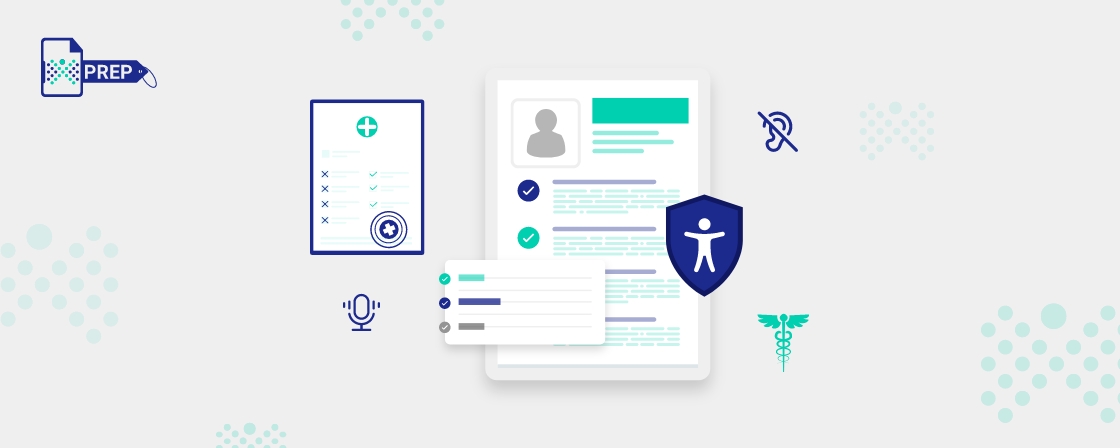Healthcare facilities and providers like hospitals and clinics (both public and private) come under the Americans with Disabilities Act (ADA), ranging under Title II and Title III. It was
made into action to avoid discrimination against people with disabilities.
According to the law, people with disabilities must have equal access to all healthcare
facilities and services. This means, not just the physical aspects of healthcare facilities need
to be accessible, but digital assets need to be made accessible as well.
How does Digital Accessibility Affect the Healthcare Industry?
According to the Title III of the Americans with Disabilities Act, healthcare providers are
given great importance to care for people with disabilities. The law itself prevents the
industry from discriminating against people with disabilities.
Moreover, as the world is becoming more digital today, even healthcare providers are increasingly taking their operations and activities online. Every primary healthcare giver has a website where you can find their complete information and even schedule appointments, treatment, and access your diagnosis. Patients can do more than that. They can even compare different doctors with the best reviews, pay their bills, or even access their test results. For these reasons, every healthcare organization must embrace the web and digital accessibility.
Moreover, as the world is becoming more digital today, even healthcare providers are increasingly taking their operations and activities online. Every primary healthcare giver has a website where you can find their complete information and even schedule appointments, treatment, and access your diagnosis. Patients can do more than that. They can even compare different doctors with the best reviews, pay their bills, or even access their test results. For these reasons, every healthcare organization must embrace the web and digital accessibility.
What are the Legal Requirements Healthcare Providers Should Follow?
Every healthcare provider must comply with the Web Content Accessibility Guidelines
(WCAG) 2.0 Level A and AA, as the ADA demands. If you fail to meet the legal requirements,
you will face penalties.
What Healthcare Documents Need to be Accessible?
Research by the Centers for Disease Control and Prevention (CDC) concludes that 61 million adults in the US live with a disability.
The above-stated figure confirms that almost 1 in 4 or 26% of the US population have a
disability. However, there is still little to no thought given to their accessibility. For example,
if buttons and links are placed close together, some individuals may find it challenging to click the link.
Moreover, even the layout and design can be a barrier for many. People with vision-related challenges find it hard to read content with less contrast between text and background. Screen readers or other assistive technologies cannot interpret images without an image description or alt text. This is why healthcare documents need to be made accessible. In fact, according to Section 1557 of the Affordable Care Act (ACA), discrimination based on sex, gender, age, race, nationality, color, and disability in certain healthcare activities or programs is strictly prohibited. This means you are required to make patient forms, documents, and communication available in accessible formats for patients with visual disabilities. If not, you will face legal issues.
Moreover, even the layout and design can be a barrier for many. People with vision-related challenges find it hard to read content with less contrast between text and background. Screen readers or other assistive technologies cannot interpret images without an image description or alt text. This is why healthcare documents need to be made accessible. In fact, according to Section 1557 of the Affordable Care Act (ACA), discrimination based on sex, gender, age, race, nationality, color, and disability in certain healthcare activities or programs is strictly prohibited. This means you are required to make patient forms, documents, and communication available in accessible formats for patients with visual disabilities. If not, you will face legal issues.
Here are the healthcare documents you need to make accessible for disabled individuals:
- Statements and Bills
- Pharmacy Directories
- Evidence of Coverage (EOC)
- Summary of Benefits
- Formularies
- Provider Directories
- Annual Notice of Change (ANOC)
- Patient Forms: Health Insurance Portability and Accountability Act (HIPAA)
- Authorization, Consent, and Admissions
- Accessibility and Inclusion
Every healthcare organization that promotes accessibility in the digital format is ready to empower all patients regardless of their abilities. You become more inclusive and do your part in being ethically correct. Healthcare organizations with more accessibility choices help people with disabilities take control of their lives and preserve their independence – all while also saving themselves from expensive legal troubles!

